Are you interested in the history of Jews in China? If your answer is yes, you can’t miss our Jewish Tour with Beijing and Shanghai. On our 9-day tour, you will go to Beijing, Hangzhou, and Shanghai. In Beijing, you will have the Jewish Tour with the Great Wall. Except for climbing up Badaling Great Wall, you will also have a chance to explore further on the Great Wall by yourself. What’s more, in the Beijing Jewish Tour, you will visit the magnificent Forbidden City, which used to be the royal palace of 24 emperors. In Shanghai, you will visit Shanghai Jewish Refugees Museum to know more about the history of Jews in China. Moreover, Huoshan Park, where the Jews in Shanghai once took refuge and gather, is also an indispensable place you must visit. In Hangzhou, you will appreciate the beautiful scenery of West Lake. If you are eager to have a short China Jewish tour from Beijing, please contact us now!

Welcome to Beijing, the capital of China. As soon as you arrive in Beijing, you will find that our local tour guide will be waiting for you at the airport. And then you will be transferred to the hotel. Along the way to the hotel, you will experience the charm of this megacity. Beijing, with a total area of about 16,410 square kilometers, has more than 21.8 million permanent residents. Beijing has convenient transport, including air, rail, and road transport. If you have time, you can experience the public transport in Beijing, which is a good way to make local touch. By the way, whatever problem you have, you can ask our tour guide for help at any time.
Today your Jewish tour with Beijing is about to start. After breakfast, accompanied by our experienced tour guide, you will visit Tian’anmen Square in the center of Beijing. Tian’anmen Square is 880 meters long from north to south and 500 meters wide from east to west. Moreover, it covers an area of 440,000 square meters and can accommodate 1 million people for grand gatherings. Along the central axis of Beijing, there is a flag pole, Monument to the People’s Heroes, Chairman Mao Memorial Hall, and Zhengyang Gate Tower in the square from north to south. As the place where countless major political and historical events occurred, Tian’anmen Square witnessed China’s rise. On July 1, 2021, the celebration of the 100th anniversary of the founding of the Communist Party of China was held here.
Then we will head north from Tian’anmen Square towards the Forbidden City (closed each Monday). As the imperial palace of the Ming (1368-1644) and Qing (1636-1912) Dynasties, the Forbidden City covers an area of about 720,000 square meters. You may wonder that in this gargantuan palace, how did people who lived here obtain ice cubes in summer without refrigerators. According to historical materials, there were 5 ice cellars with a depth of 1.5 meters, which had a good cooling effect. Ice cubes were kept in ice cellars in winter. Each ice cellar can store 25,000 ice cubes. In summer, these ice cubes can not only prevent the spoilage of fresh food but also make ice food for the royal family. From this aspect, we can say that the ancients are so clever. More interesting things are waiting to be explored.
After lunch, you will visit Hutongs in Beijing. Hutongs refer to the small alleys and streets in the old city area of Beijing. Most of these hutongs, which were formed during the Yuan Dynasty (1271-1368), have undergone hundreds of years of development. Hutongs stretch from east to west, with a width of no more than 9 meters. The buildings in Hutongs are nearly Chinese quadrangles, a traditional courtyard-style building. Quadrangles are lined up next to each other, and the passage between them is Hutong. Hutong is not only the road in the city, but also an important symbolization of the development and evolution of Beijing’s history and culture. You can take a rickshaw to visit Hutongs, enjoying a leisurely afternoon.
After visiting Hutongs, your next stop is the Summer Palace, a royal garden of the Qing Dynasty. Located in the western suburbs of Beijing, the Summer Palace covers an area of about 3 square kilometers. Based on the Hangzhou West Lake and the design techniques of gardens in southern China, it came into being. It is also the best-preserved imperial palace, which is known as the “Royal Garden Museum”. One of the main buildings in the Summer Palace, the Hall of Benevolence & Longevity is the place where Empress Dowager Cixi (the actual ruler of the late Qing Dynasty) and Emperor Guangxu (11th emperor of the Qing Dynasty) received foreign envoys and dealt with political affairs. In front of the hall, there is a bronze dragon and a phoenix. In ancient times, the dragon symbolized the emperor, while the phoenix symbolized the empress. So, it is common to set the dragon in the middle, the phoenix to the side. But after Cixi came into power, she reversed the position of the dragon and the phoenix to show her authority and dignity.
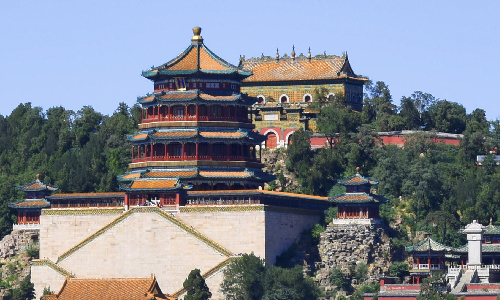
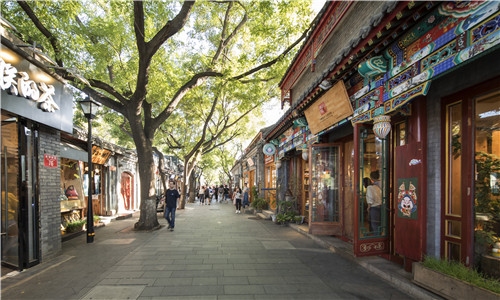
Today you will continue your tour in Beijing. After breakfast, we will drive northwest for about 70 minutes to visit the Sacred Way in the Changping Area, about 45 kilometers away from the center of Beijing. The Scared way, which is the leading road to the Ming Tombs in ancient times, is about 7.3 kilometers long. When you walk along the Sacred Way, you will find that dozens of stone men and beasts stand on both sides. These stone men and animals are known as Stone Statues, which were the deceased emperors’ Guard of Honor in miniature to show emperors’ sovereignty and dignity. There are 12 pairs of stone beasts, including lions, camels, elephants, horses, and two kinds of divine beasts (Kylin and Haechi). And there are also 6 pairs of stone men, such as generals, civil service officials, etc.
After experiencing the solemnity of these stone statues, you will visit the Ding Tomb of the Ming Tombs at the foot of the Dayu Mountain. This tomb, which was built from 1584 to 1590, covers an area of 182,000 square meters. The 13th emperor of the Ming Dynasty, Zhu Yijun, and his two empresses (Empress Xiao Duanxian and Empress Xiaojing) were buried in the Ding Tomb. And it is the only tomb that has been excavated among the Ming Tombs. In 1956, the national archaeological team decided to first excavate the Chang Tomb (the tomb of the third emperor of the Ming Dynasty). But they found the entrance of the Ding Tomb of the Ming Tombs by accident, and the entrance to Chang Tomb was never found. Then they started to excavate the Ding Tomb. When this team found the underground palace here, they didn’t know whether there was poisonous gas there. So, they threw a rooster into the palace to judge the safety in it. Seven days later, people still heard the rooster crowing, which proved that there was no danger. So, this team entered the underground palace to excavate. Finally, more than 3,000 cultural relics were unearthed.
After lunch, you will visit Badaling Great Wall in the Yanqing District, 35.6 kilometers away from the Ding Tomb. We will drive northwest for about 40 minutes to arrive there. Badaling Great Wall, built in 1505, is a great defense project in ancient China. Except for wandering around Badaling Great Wall, you also have a chance to visit the China Great Wall Museum (closed each Monday) in this scenic area. This museum, whose name in the plaque was inscribed by the then President Jiang Zemin, opened to the public in 1994. The museum comprehensively shows the history, military, architecture, economy, culture, and art as well as the status quo of the Great Wall. As of 2019, this museum housed more than 2500 cultural relics related to the Great Wall, including ironware, bricks of the Great Wall, ceramics, and coins. Visiting the China Great Wall Museum, you will have a better understanding of the Great Wall in China.
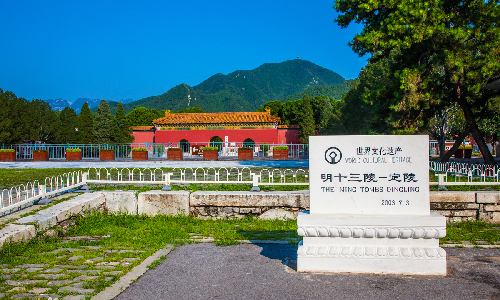
Today you will continue to explore some new places in Beijing. After breakfast, you will visit the Temple of Heaven in the Dongcheng District. Built in 1420, it covers an area of about 2.73 million square meters. In the Ming and Qing Dynasties, it was a place where emperors worshipped heaven and prayed for a bumper harvest. Except emperors once worshipped the heaven in history, Yuan Shikai(1859-1916), a famous statesman and military strategist at the time, also did the same thing in 1914. After the Revolution of 1911, the feudal imperial era completely ended, which marked the tradition of sacrificing heaven as a symbol of feudal despotism came to an abrupt end. But in 1914, Yuan Shikai, president of the Republic of China at the time, worshipped heaven according to imperial etiquette. That is the preparation he made to become the emperor, which caused uproar in society. In the end, Yuan Shikai's dream of becoming an emperor was shattered. You will learn more interesting history about China here.
After visiting the Temple of Heaven, you will visit Silk Street, which is close to the international CBD business district. It is the most influential international tourist shopping market in China, which is as famous as the Great Wall and the Forbidden City. As one of the earliest big shopping malls with the most famous commercial brands in China, Silk Street has a history of nearly 30 years. There are many cultural products, including silk clothing, porcelain, tea, and traditional handicrafts, which are popular with consumers around the world. During the China-Africa Forum, Silk Street, as the designated reception market, successfully received more than 290 distinguished guests at ministerial level and above from African countries. That demonstrated the unique status of Silk Street as China’s No. 1 foreign-related market.
After lunch, you will visit Confucius Temple, about 8.5 kilometers away from Silk Street. In the Yuan, Ming and Qing Dynasties, Confucius Temple was a place for offering sacrifices to Confucius(551BC-479BC), who is a great thinker, statesman, and educator in China, as well as the founder of Confucianism. With a building area of about 7,400 square meters, Confucius Temple was built from 1302 to 1306. In Confucius Temple, there is a cypress tree with a history of more than 700 years. It was planted by Xu Heng, a government official in the Yuan Dynasty. There is a legend about this cypress. Yan Song was the treacherous prime minister in the Ming Dynasty. One day, he worshipped Confucius on behalf of Emperor Jiajing (the 11th emperor of the Ming Dynasty). When he went under the tree, his official headwear was taken off by the branches of the cypress. Since then, they have called it Bianjian cypress, which means that this cypress could distinguish between upright people and treacherous people.
When you finish your tour of Confucius Temple, you will visit the Lama Temple in the northeast of downtown Beijing. In 1694, Emperor Kangxi (the 4th emperor of the Qing Dynasty) ordered to build a mansion and bestowed it on his fourth son Yinzhen. After Yinzhen became the next emperor, this mansion was converted to a temple, the Lama Temple. When you visit here, you will see a large copper pot in the temple. With a diameter of 2 meters and a depth of 1.5 meters, the copper pot weighs 8 tons. It was used to cook Laba porridge. Laba porridge is a special kind of porridge made during the Laba Festival (the eighth day of December in the lunar calendar), the day when Shakyamuni became a Buddha. On that day, porridge was sacrificed to the Buddha first, then dedicated to the royal family, the eminent lamas. The remaining porridge would be given to common people. You will have the chance to learn more traditions of China from your knowledgeable guide.

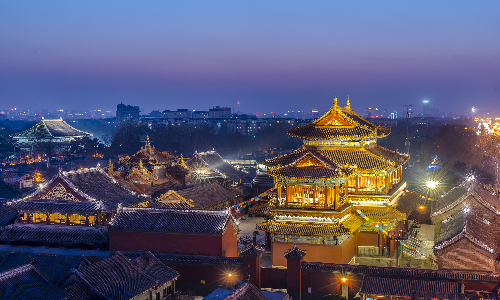
 Shanghai
Shanghai Today your tour in Beijing will come to an end. Please bring your luggage to the lobby of the hotel. You will be transferred to the train station and take the estimated train G11 12:00/16:38 to Shanghai. As the national central city, which has a total area of 6340.5 square kilometers, Shanghai has formed a super-large-scale comprehensive transportation network, including railways, waterways, highways, aviation, and rails. Welcome to Shanghai to experience its charm.
Today your Jewish tour in Shanghai is about to start. In World War II, countless Jewish refugees fleeing persecution flooded into Shanghai from Europe. At that time, Shanghai residents, who had been traumatized by the war, received and helped these Jewish refugees to tide over the difficulties. Let’s find the footprints of the Jews in Shanghai who once took refuge here. After breakfast, you will visit the Shanghai Jewish Refugees Museum (closed each Monday) in the Hongkou District. To commemorate the history of protection of Jewish refugees by Shanghai in the 1930s and 1940s, the local government established the Shanghai Jewish Refugees Museum with the Moses Hall at its core. When you visit this museum, you can watch the video materials to listen to the Jewish refugees’ personal experiences at the time. You can also quickly understand the historical background through a short film.
Next, we will visit Huoshan Park, which was a place for Jewish refugees to rest and gather. Huoshan Park, covering an area of 3,700 square meters, is located in the southeast of Hongkou District. In the park, there is a Jewish refugee shelter, with gray tiles, white walls, and dormer windows. A nameplate hung on the wall next to the gate, written in Chinese and English: “This park was renovated with the donations of the State of Israel and Israeli companies and in collaboration with Hongkou District People’s Government in appreciation of all Shanghai people have done for Jewish refugees before and during World WarⅡ”. It expresses the Jewish sincere gratitude to Shanghai.
After lunch, you will visit Yu Garden (closed each Monday). Yu Garden was originally a private garden in the Ming Dynasty. It has a history of more than 400 years. Covering an area of more than 20,000 square meters, it mainly has six attractions: Huge Rockery, Wanhua Chamber, Dianchun Hall, Huijing Tower, Yuhua Hall, and Inner Garden. Your guide will escort you during the visit, so you won’t miss any must-sees.
After visiting Yu Garden, you will go to Shanghai Oriental Pearl TV Tower in Pudong New Area. As one of Shanghai’s symbolic buildings, Shanghai Oriental Pearl TV Tower is 467.9 meters high, with 3 main spheres as its main components. It integrates sightseeing, catering, shopping, and entertainment. At 350 meters of this tower is the Space Capsule (the top sphere), at 267 meters is the highest revolving restaurant in Asia, and at 263 meters is the main sightseeing floor. On the 263-meter floor, there is a 360-degree sightseeing hall where you can enjoy the beautiful scenery of Shanghai.
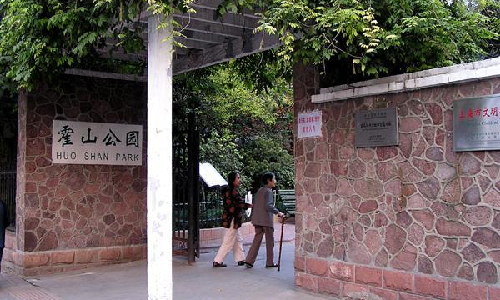
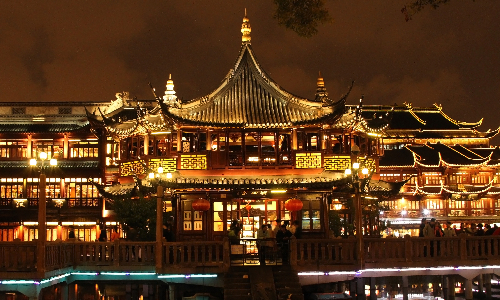
 Hangzhou
Hangzhou Shanghai
Shanghai After breakfast, we will drive southwest for about 2.5 hours to Hangzhou in the Zhejiang Province, about 170 kilometers away from Shanghai. Your first stop in Hangzhou is the West Lake. West Lake, with a total area of 49 square kilometers, is one of the top ten attractions in China. There are many tourist attractions, such as Leifeng Tower and Broken Bridge surrounding West Lake. The most famous landscape is Moon and Candlelight Mirrored in the Lake. Because of its beautiful scenery, China puts its image on the back of the banknote. We will arrange a boat tour for you to experience its natural scenery.
After visiting West Lake, you will go to Lingyin Temple, which covers an area of about 87,000 square meters. Built in 326, this temple has a long history. The layout of Lingyin Temple is the same as that of other temples in southern China. On the central axis of the whole temple, there are three halls: the Heavenly Kings Hall, the Mahavira Hall, the Medicine Buddha Hall. The Medicine Buddha Hall is about 20 meters long and 12 meters wide. There are twelve statues on both sides of this hall, which are the twelve disciples of the Medicine Master Buddha.
After lunch, you will go to Six Harmonies Pagoda. Built in 970, Six Harmonies Pagoda has 104 iron bells hung on the eaves of the outer layers. It is 59.89 meters high and covers an area of 890 square meters. Qianlong (the fourth emperor of the Qing Dynasty) once inscribed on each floor of the Six Harmonies Pagoda. There is a stele, which is 4.35 meters high and 1.5 meters wide, recording the history of the Six Harmonies Pagoda and Emperor Qianlong’s personal experience of traveling here. After visiting Six Harmonies Pagoda, you will return to Shanghai.

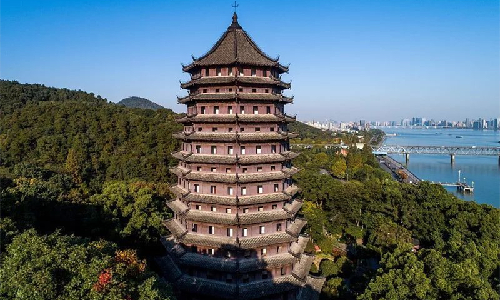
Today you will continue your tour in Shanghai. After breakfast, you will visit The Bund, which is 1.5 kilometers long, in the Huangpu District. After Shanghai becoming a commercial port in 19 century, foreign banks, associations, and newspaper offices began to gather here, and the Bund became the financial center of China and even the Far East. There are various kinds of buildings in The Bund, including British classical, French classical, Baroque, and Eastern Indian styles. The Bund presents the architecture from the whole world.
Your next stop is Nanjing Road, the earliest and most prosperous street in Shanghai. There are more than 700 shops on both sides of this road. In Nanjing Road, there is a LEGO Shanghai Flagship Store, which is the second LEGO Flagship Store in Asia. In this flagship store, there is a miniature version of the Shanghai Oriental Pearl TV Tower, which was built with 540,836 LEGO bricks. And it took 2,800 hours to complete this model. Interestingly, under this tower, there are a group of people who are built with LEGO bricks. Some are taking pictures, while some are walking, which is very realistic. If you are a LEGO lover, you must visit this place.
After lunch, we will drive you southeast for about 50 minutes to go to Zhujiajiao Ancient Water Town, 50 kilometers away from Nanjing Road. There is a bridge on the water here, called Tai’an Bridge. Tai’an means peaceful and safe. It is said that if people stand on the bridge for a short while, they will be assured of peace and safety for the year ahead. More interesting attractions are waiting to be explored. We will arrange a boat tour for you to experience the special charm of this water town.
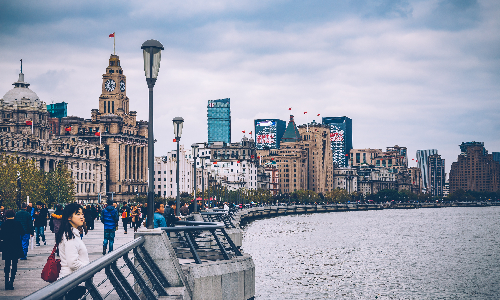
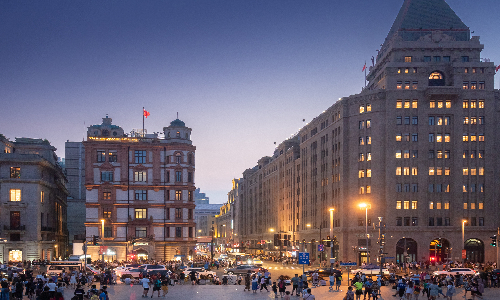
Today your 9-day Jewish Tour from Beijing ends here. It’s time to say goodbye. You will be transferred to the airport according to your flight. Your guide will help you check in. Welcome to China again.
Editor: Deng Kaili
Proofreader: Summer Hou
| City | Five Star hotel list | Four Star hotel list |
|---|---|---|
| Beijing | Sunworld Dynasty Hotel Beijing Wangfujing | Sunworld Hotel Wangfujing |
| Shanghai | Ocean Hotel Shanghai | Courtyard by Marriott Shanghai Central |
 |
![]() About your child or infant, please contact us for a discounted price.
About your child or infant, please contact us for a discounted price.



We started with a few days in Beijing & ended in Shanghai, from where we visited the Forbidden City and Great Wall. In between we visited Terra Cotta Warriors Museum, Panda Base, Shanghai Disneyland.

We had a wonderful holiday in China which will remain long in the memory. China is a breathtakingly beautiful country full of splendid temples and palaces, mountains and rivers, peaceful rural scenes and bustling shopping streets.
 QUICK ENQUIRY
QUICK ENQUIRY